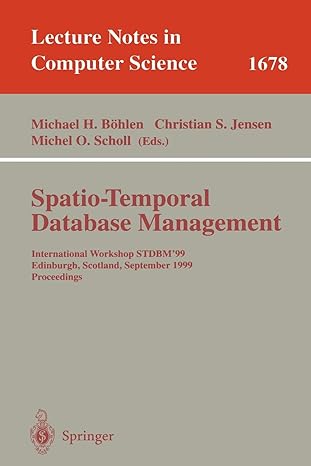Question
python question The initialisation function and the __str__() function for a PriorityQueue class are shown below. This class uses a min binary heap (i.e. the
python question
The initialisation function and the __str__() function for a PriorityQueue class are shown below. This class uses a min binary heap (i.e. the smallest value at the root), stored in a Python list, to represent the priority queue. class PriorityQueue:
def __init__(self):
self.bin_heap = [0]
self.current_size = 0
def __str__(self):
return str(self.current_size) + " : " + str(self.bin_heap[1:])
A PriorityQueue object, pq, has been created and has had the following six values inserted, in this order: 30, 20, 15, 12, 13, 18 The code for performing these insertions is as follows:
pq = PriorityQueue()
pq.insert(30)
pq.insert(20)
pq.insert(15)
pq.insert(12)
pq.insert(13)
pq.insert(18)
What is the output after each of the following statement are executed, in the order shown below (note that in each question, the first part of the output string - the size of the priority queue - is already shown)?
a) printing the current priority queue print(pq) 6 :
b) then, continuing after (a), inserting the value 17 and printing the resulting priority queue: pq.insert(17) print(pq) 7 :
c) finally, continuing after (b), deleting the minimum value from the priority queue, and then printing the remaining values: pq.del_min() print(pq) 6 :
Step by Step Solution
There are 3 Steps involved in it
Step: 1

Get Instant Access to Expert-Tailored Solutions
See step-by-step solutions with expert insights and AI powered tools for academic success
Step: 2

Step: 3

Ace Your Homework with AI
Get the answers you need in no time with our AI-driven, step-by-step assistance
Get Started


